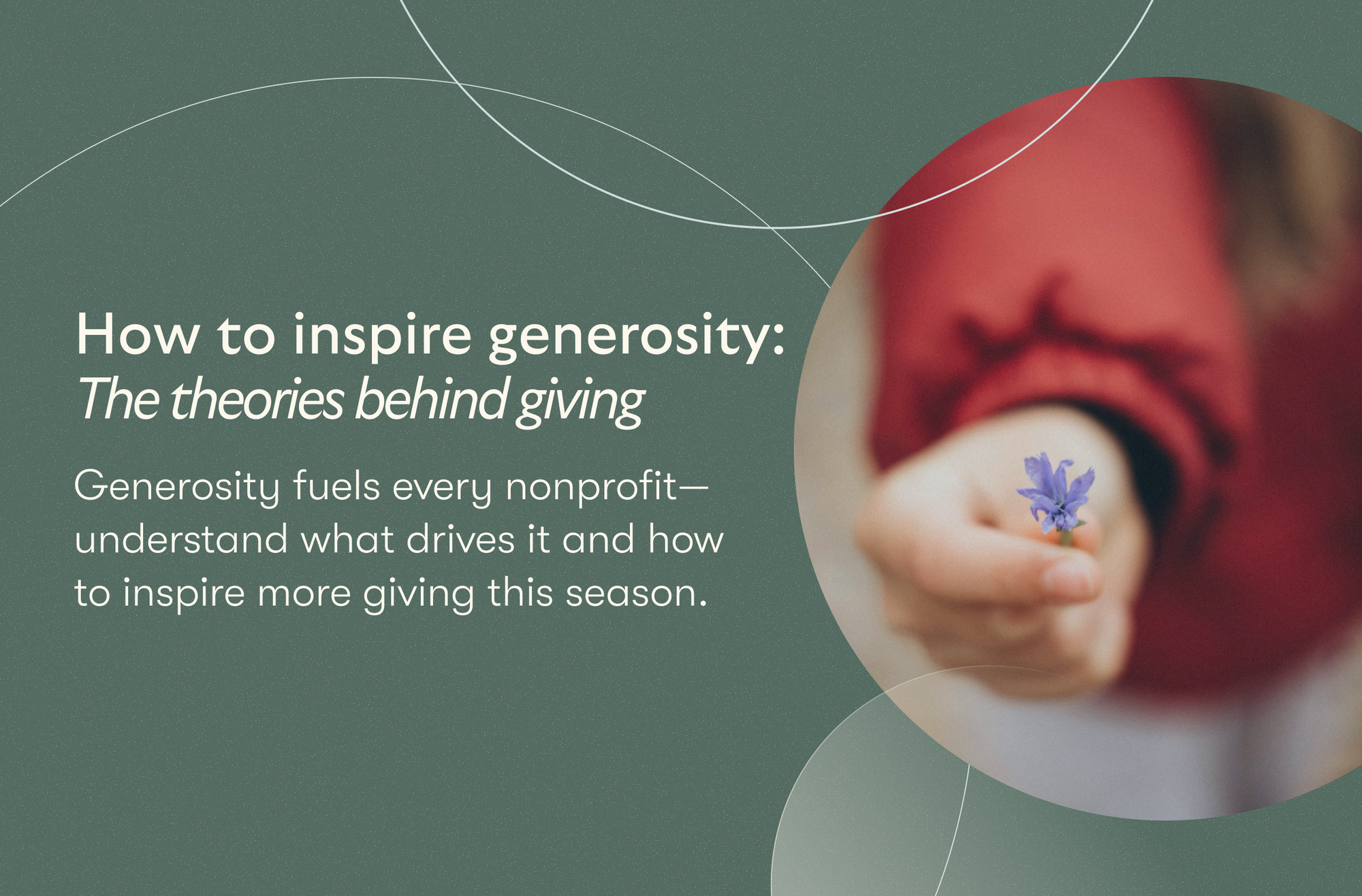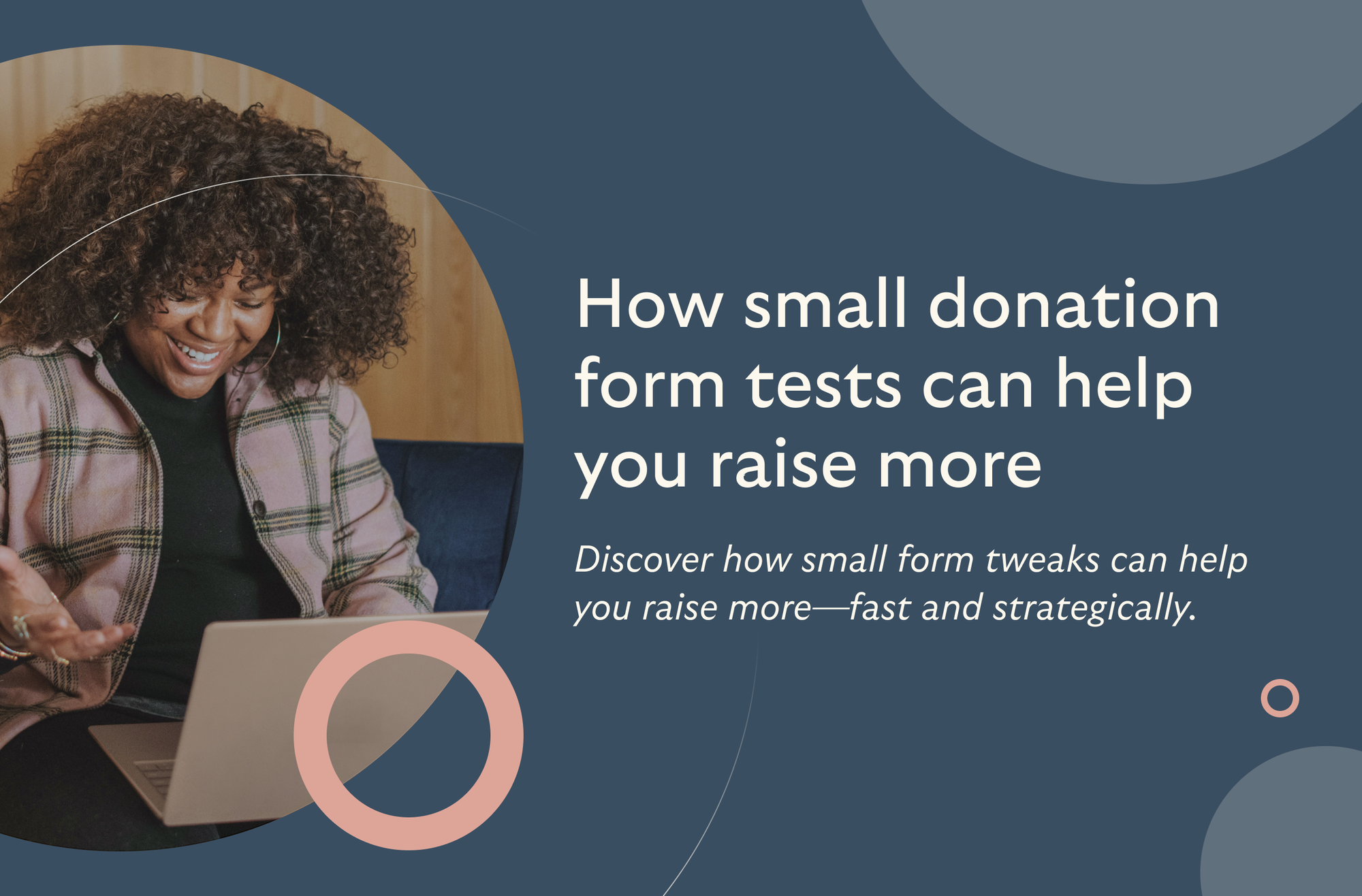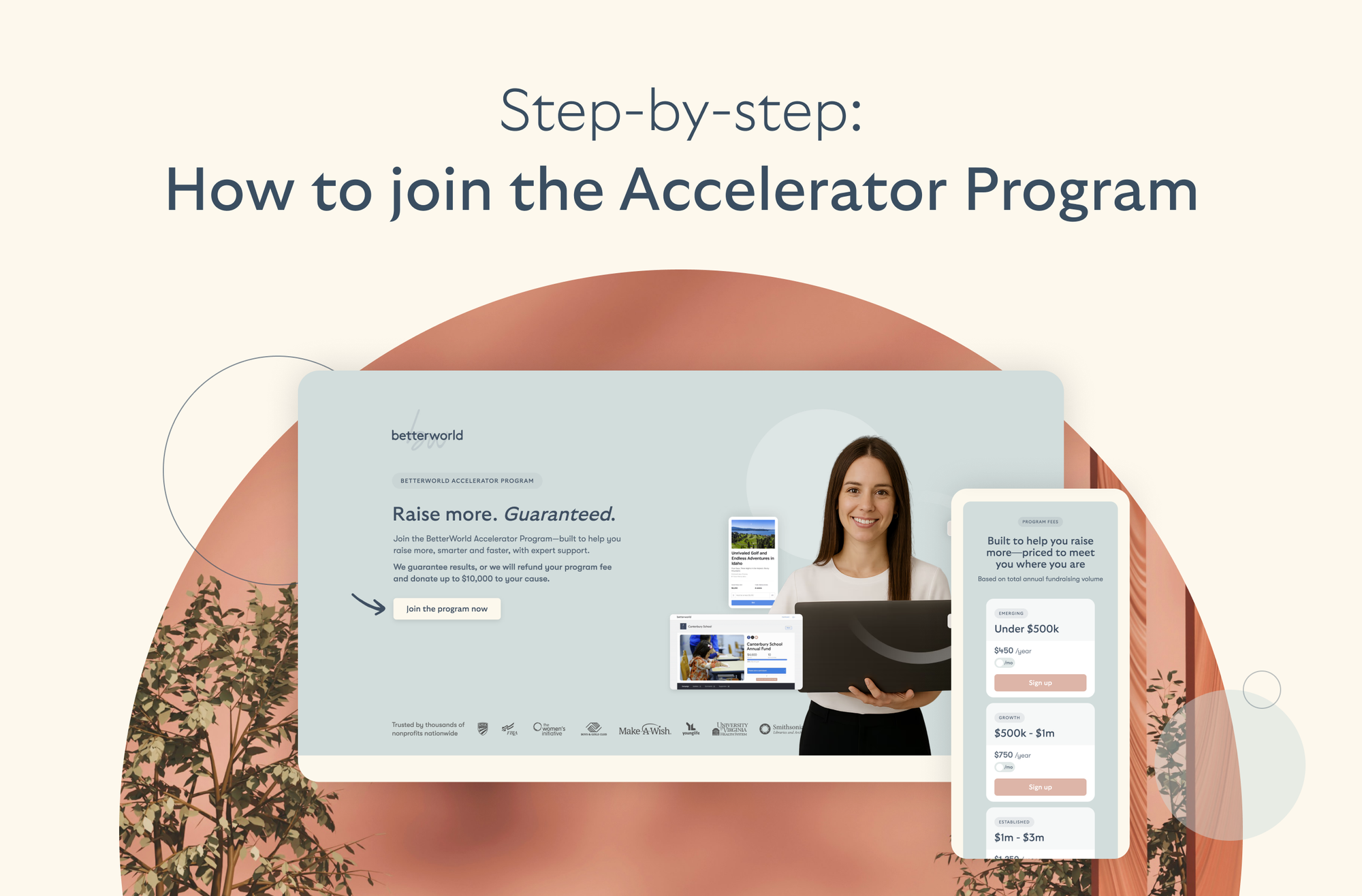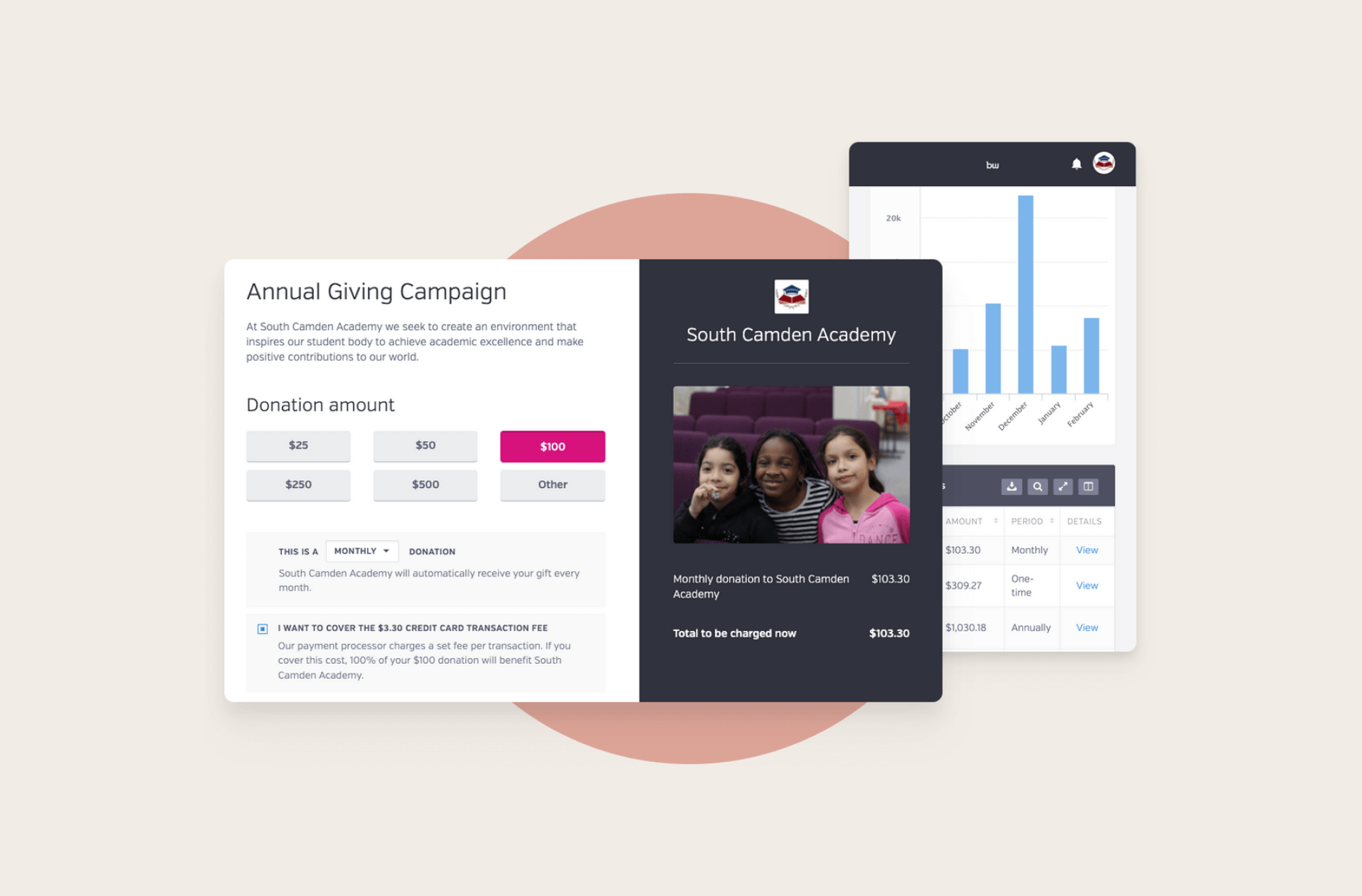Simplify donations with customizable default donation amounts
Streamline your processes and keep online and offline donations in one place
Engage with your donors with automatic updates
Give your donors the ability to donate once, monthly, or annually
Marketing Strategies for Nonprofit Year-End Giving Campaigns
By Whit Hunter
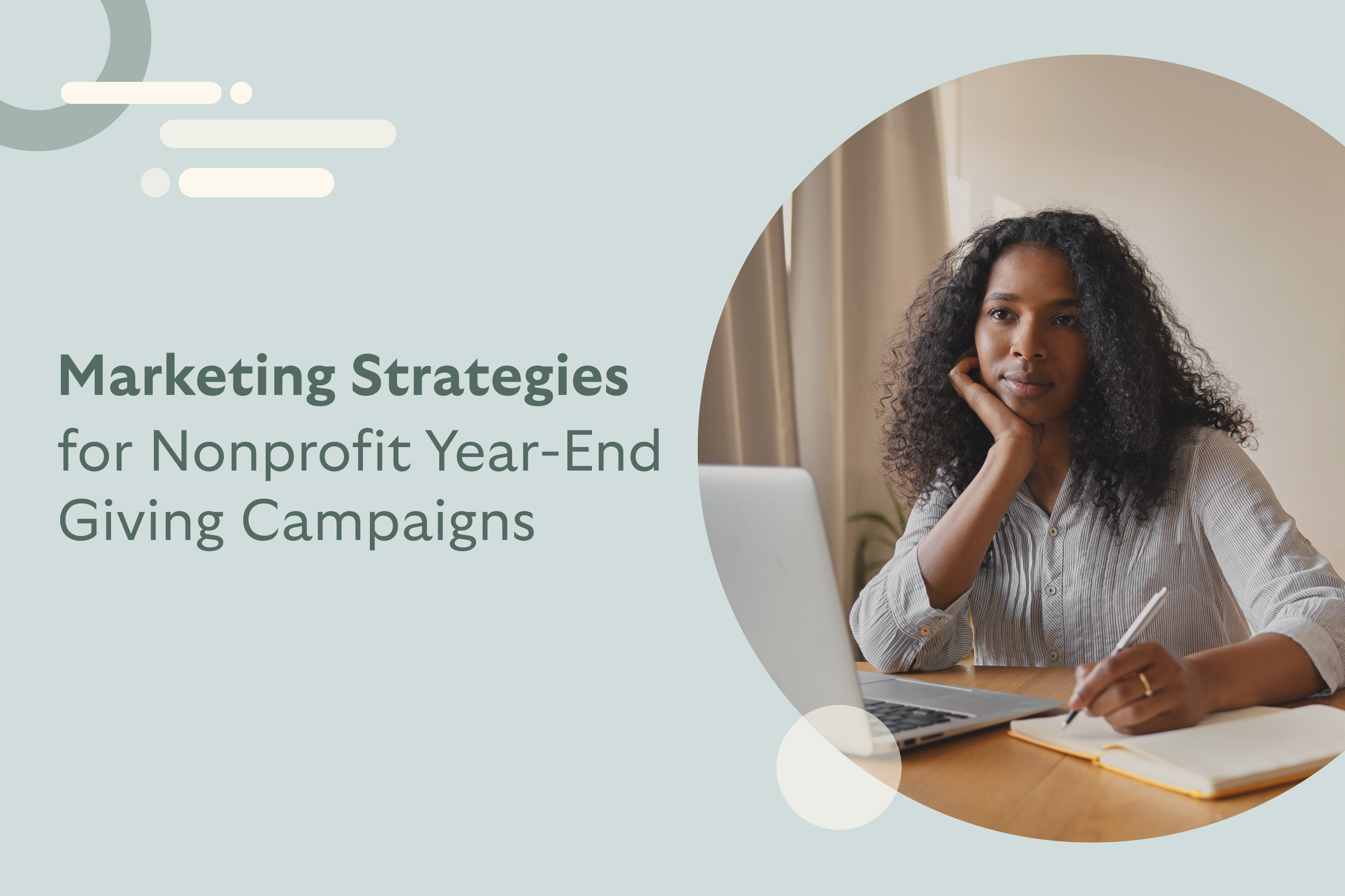
Nonprofits use marketing to keep their mission in people's minds, build their reputation, and shape their image. These marketing strategies become even more important when it comes to year-end giving.
With a solid marketing strategy, your nonprofit can benefit from the generosity of this season and make a lasting impact. This blog will look at some effective marketing strategies to help your year-end fundraising campaign succeed.
What is Nonprofit Marketing?
Nonprofit marketing is about sharing your mission and connecting with people who care about your cause. It’s not just about asking for donations. It’s about building relationships and getting your message out there in ways that make people want to join in and help.
Whether through email, social media, or direct mail, nonprofit marketing helps tell your story to inspire people to support your year-end fundraising efforts.
Good marketing connects your nonprofit's goals with supporters who want to help make those goals happen. It’s the tool that helps you show why your work matters and how others can participate.
Marketing becomes even more important during year-end giving because many people are open to giving back.
10 Benefits of Marketing for Nonprofits at Year-End Giving
- Raises Awareness: Helps spread the word about your nonprofit to reach more people who might want to support your cause.
- Boosts Donations: Show people how they can make a difference and encourage them to contribute to your year-end giving campaign.
- Strengthens Relationships: It keeps your current donors informed and engaged, reminding them why they started supporting you in the first place.
- Increases Visibility: Makes your nonprofit stand out during a time when many are considering where to donate.
- Attracts New Donors: Reaches new supporters by showcasing your mission and impact.
- Showcases Your Impact: Shows potential donors the results of their support, which makes them feel confident that your organization will use their money wisely.
- Adds Credibility: Creates a professional image for your nonprofit to build trust with new and existing donors.
- Shares Year-End Giving Messages: This tool lets you communicate important messages to donors, reminding them of tax benefits and how they can contribute.
- Builds Community: Connects people who care about the same cause, creating a community of supporters.
- Encourages Recurring Gifts: Motivates one-time donors to consider giving more regularly, which can help your nonprofit all year.
How to Create a Nonprofit Marketing Plan
A marketing plan for your year-end fundraising campaign is all about being clear and focused. Let’s break it down step by step:
1. Set Clear Marketing Goals
Start by setting clear goals for your campaign. What do you want to achieve? It could be raising a specific amount, increasing donor engagement, or expanding your supporter base.
These goals will guide your entire marketing plan. Use the SMART framework (Specific, Measurable, Achievable, Relevant, Time-based) to ensure your goals are realistic and trackable.
2. Set a Budget
Decide how much of your overall budget you can dedicate to marketing. Many nonprofits allocate around 5-15% of their operating budget for marketing purposes. This will cover digital ads, printing materials, software, and content creation costs.
Once you have a total amount, break it down by marketing channel. For instance, you might want to invest more in proven successful channels, like email campaigns or social media ads.
Some funds should also be set aside to test new strategies or tools. Budgeting helps you track ROI and make adjustments as needed throughout the campaign.
3. Know Your Audience
Next, consider who you want to reach. Break your audience into segments—existing donors, new prospects, or specific groups like corporate sponsors.
Each audience may respond better to different messages or platforms. Understand their needs and preferences to tailor your approach and connect more effectively.
4. Craft Your Key Messages
Now, it’s time to craft your key messages. Your messaging should align with your campaign goals. What do you want your audience to know or feel?
Focus on straightforward, engaging content that connects with your target audience. Highlight the impact of their donations, tell real stories from your community, and make it personal. Use a consistent message across all platforms to build recognition.
5. Select & Plan Your Marketing Strategies
There are many ways to reach your audience, from email to social media to direct mail. Choose the strategies that make the most sense for your nonprofit and plan how to use each.
Remember your audience as you decide where and how to share your messages. Start planning what content you’ll need for each platform and how often you’ll share it. Creating a calendar with deadlines and critical milestones can help keep everything on track.
No matter which marketing tactic you choose, planning is crucial to success. Before you start execution, take the time to carefully map out the details. Consider the following questions to guide your planning:
- What: What specific activities will you carry out for this tactic?
- When: When will these marketing actions happen? Create a detailed timeline.
- Why: Why is this particular tactic important for your campaign? Make sure it aligns with your overall goals.
- Who: Who will be responsible for each task? Assign roles to team members.
- How much: How much do you plan to spend on this tactic? Double-check that it fits your budget.
- How does it connect: How does this tactic tie into your broader marketing and organizational goals?
For more detailed strategies and insights on maximizing donations during the giving season, check out The Comprehensive Guide To Year-End Giving For Nonprofits.
6. Analyze Your Marketing Performance
Once your marketing campaign is running, it’s important to see how well it’s working. Use performance indicators to understand what’s going well and where to improve.
Use key performance indicators (KPIs) to measure success. Here’s a breakdown of some common year-end giving strategies and what metrics to watch:
- Email Marketing: Email opens
- Event Marketing: Ticket sales
- Video Marketing: Video views
- Social Media: Shares and comments
- Website: Page views
- Public Speaking: Referrals
- Content Marketing: Subscriptions
- Text Message: SMS delivery rate, click-through rate (CTR), and conversion rate
- Direct Mail: Response rate, conversion rate, and ROI
By tracking these indicators, you can adjust your approach as needed to make your year-end giving campaign as effective as possible.
10 Marketing Strategies for Nonprofit Organizations
Nonprofits need to use a mix of tactics to stay top-of-mind, engage donors, and motivate them to give before the year closes. If they do, they will ensure a successful year end giving campaign.
Let's discuss the perfect marketing strategies that can make a significant impact.
1. Event Marketing
Event marketing is about using events to create a connection with your donors. It gives donors a chance to engage with your nonprofit directly. Depending on your audience and resources, these events can be in-person, virtual, or hybrid.
They allow your organization to showcase your mission while creating a deeper relationship with supporters. Events range from galas and auctions to smaller gatherings like webinars or donor appreciation events.
How to execute it perfectly:
- Plan early: Secure your venue or virtual platform well ahead of time.
- Define goals: Know what you want to achieve, whether it's raising funds, increasing awareness, or building donor relationships.
- Promote: Use social media, email campaigns, and your website to get the word out.
- Engage attendees: To keep the audience involved, offer interactive elements, such as live Q&A sessions or donation challenges.
- Thank donors: Follow up with personalized thank-you notes and share the event's success.
When to use this strategy during year-end giving: The best time to host an event is during key year-end moments, such as Giving Tuesday or in December, when donors are more likely to give.
A kickoff event in November or early December can help build momentum for your entire year-end giving campaign, keeping your nonprofit top of mind as donors plan their contributions.
Why not host a virtual event with BetterWorld at no cost? From selling tickets to automated check-outs, we have got our back. Request a free demo today!
2. Email Marketing
Email marketing is one of the most effective tools for nonprofits to engage with donors, especially during year-end giving.
Email marketing is a direct way to share your mission, provide updates, and highlight the impact of donations. Many donors prefer email marketing, which makes it a key part of any year-end fundraising campaign.
How to execute it perfectly:
- Segment your audience: Group donors by their giving habits to send personalized year-end giving messages.
- Personalize emails: Use the recipient's name and refer to their past donations to create a personal connection.
- Create engaging subject lines: Write eye-catching subject lines encouraging readers to open the email.
- Include a clear call to action: Make sure the donor knows exactly what to do next, like donating or attending an event.
- Automate emails: Schedule automated emails like reminders before key dates or thank-you notes after donations.
- Track results: Monitor metrics like open rates and donations to adjust your strategy as needed.
When to use this strategy during year-end giving campaigns: Email marketing should start early in November, with the biggest push happening in December.
Giving Tuesday and the last week of December are critical periods. Automating a series of reminders leading up to December 31st ensures that your end-of-year giving email campaign reaches donors during the most important time for donation.
Want to raise more Donations? Try BetterWorld’s Donation Tool for FREE!
3. Video Marketing
Video marketing allows nonprofits to tell their stories visually and helps donors connect more deeply with their mission. Videos are especially effective during year-end campaigns because they convey emotion and urgency better than text alone.
Whether it's a thank-you video or a story of impact, video content can help bring your cause to life.
How to execute it perfectly:
- Keep it authentic: Use real stories from beneficiaries or staff to build trust.
- Focus on quality over quantity: You don’t need a big budget, but ensure the video is clear and has good sound quality.
- Include a call to action: Let viewers know how they can support your cause, whether by donating or sharing the video.
- Share across platforms: To reach a wider audience, post your video on social media, your website, and even in emails.
- Use storytelling: Highlight how your organization makes a difference, showcasing specific examples of how donations impact the community.
When to use this strategy during year-end giving campaigns: Videos can be a powerful tool during critical moments of year-end fundraising, such as Giving Tuesday or the final week of December.
These videos can serve as reminders for donors and help reinforce the urgency to give before the year ends. They work well when tied to specific campaigns or as a way to thank donors for their contributions.
4. Direct Mail
Even in the digital age, receiving a physical letter or postcard can make a powerful impression, especially when targeted at older donors or those who respond well to personalized touches.
Direct mail marketing allows nonprofits to connect with supporters on a personal level. It reminds them of the cause in a way that emails or social media sometimes can’t match.
How to execute it perfectly:
- Personalize the message: Address the donor by name and refer to past contributions.
- Tell a compelling story: Use storytelling to show how their donations have impacted real lives.
- Create a clear call to action: Be specific about what you need and how the donation will be used, such as, "Your $50 donation will provide meals for 10 families."
- Follow up with gratitude: Send a thank-you letter or note after the donation.
- Consider using a matching gift: Highlight matching opportunities to encourage larger donations.
When to use this strategy during year-end giving campaigns: The best time to send mail is in the year's final months, ideally in late November or early December, when donors are more likely to be thinking about charitable giving.
A follow-up in the last week of December can also create a sense of urgency as the year closes.
5. Social Media Marketing
A study found that 55% of people who learn about an organization on social media take action in some way. (Source)
Social media marketing for nonprofits involves using platforms like Facebook, Instagram, TikTok, and Twitter to share your mission, engage with supporters, and encourage donations. It’s a powerful way to reach a broad audience and one of the most effective year-end giving strategies.
How to execute it perfectly:
- Choose the right platform: Focus on platforms that best match your audience, like Facebook for older donors or Instagram for younger ones.
- Tell a compelling story: Use visuals, videos, and real-life stories to show the impact of donations.
- Be interactive: Respond to comments and messages quickly. Show that your organization is actively engaging with followers.
- Use consistent branding: Ensure your visuals and messaging align across all social media platforms.
- Use hashtags and trends: Use popular hashtags or create your own to increase visibility.
When to use this strategy during year-end giving campaigns: Social media is ideal for ramping up engagement in the weeks before big giving days, like Giving Tuesday and the last week of December.
Posting regular updates and reminders during these periods will keep your nonprofit top of mind for donors. You can also use social media to share progress updates and thank supporters in real time.
6. Web Marketing
Web marketing refers to the strategies nonprofits use on their websites to attract and engage visitors and, ultimately, encourage donations or other actions.
Your nonprofit's website is the central hub for all digital activity. It is where donors can learn about your mission, read success stories, and contribute. A well-optimized website is critical for success, especially when donors actively seek organizations to support.
How to execute it perfectly:
- Optimize your donation page: The donation form should be simple, mobile-friendly, and secure. To reduce abandonment, avoid asking for too much information upfront.
- Use strong calls to action: Place clear, compelling calls to action on key pages of your website, like "Donate Now" or "Support Our Mission."
- Tell your story: Use your website to showcase impact stories and visuals that help connect donors emotionally to your cause.
- Apply SEO: Optimize your website for search engines by using relevant keywords so donors searching for terms like "year-end giving" can easily find you.
When to use this strategy during year-end giving campaigns: Your website should be ready to handle an increase in traffic during key periods of year-end fundraising.
The most critical time is in December, especially the year's final days when many people make last-minute donations for tax benefits.
7. Text Messages
9 out of 10 people read the texts they receive within the first 3 minutes, and text messages have an impressive 98% open rate. (Source) Text messaging is an incredibly effective marketing tool for nonprofits during year-end giving campaigns.
Text messaging allows you to reach supporters quickly and directly. It’s a great way to share updates, send reminders, or even thank donors for their contributions. Text messaging can be used for both engagement and fundraising, making it a versatile tool in your marketing strategy.
How to execute it perfectly:
- Keep it short and clear: Your message should be concise and include a clear call to action, such as "Donate now" or "Support our mission."
- Personalize your messages: Address donors by name and acknowledge their past contributions to build a personal connection.
- Test your messages: Before sending out texts, test different timings and wording to see what works best with your audience.
- Ensure mobile-friendly donation links: If you're sending a link, make sure the page is optimized for mobile use.
When to use this strategy during year-end giving campaigns: Text messages are perfect for critical moments in your campaign, such as reminders about Giving Tuesday or the final push at the end of December.
We recommend sending at least one to two text messages a week. The best time to send SMS marketing messages is typically 12 p.m. or 8 p.m., when recipients are more likely to check their phones.
8. Public Speaking
Public speaking involves presenting your nonprofit’s mission, values, and goals to an audience. From a small community gathering to a large fundraising gala, public speaking allows you to connect with potential donors, partners, and volunteers on a personal level.
It can build trust, showcase the impact of donations, and inspire people to take action. You can also take public speaking virtually and combine it with social media marketing.
How to execute it perfectly:
- Know your audience: Tailor your message to the interests and values of your listeners. Focus on what matters to them and how they can help your cause.
- Tell a compelling story: Share real stories that show the impact of your organization’s work. Personal stories work well with audiences and create emotional connections.
- Keep it simple: Use clear and simple language. Avoid jargon and focus on a few key points you want your audience to remember.
- Engage with your audience: Ask questions, involve them in your presentation, or give them time for reflection.
- Have a clear call to action: End your speech by telling the audience exactly how they can support your nonprofit, whether donating, volunteering, or spreading the word.
When to use this strategy during year-end giving campaigns: Public speaking is ideal for fundraising dinners, community meetings, or year-end celebrations.
These events, often held throughout the last two months or the last weeks of December, provide an excellent opportunity to make personal appeals and engage with your audience directly.
9. Paid Advertising
Paid advertising uses platforms like Google Ads, Facebook, and Instagram to promote your nonprofit’s year-end giving campaigns. This method allows you to target specific audiences with ads and help your organization reach more potential donors who might not know your cause.
This marketing strategy can be combined with other approaches, such as social media marketing, email marketing, and organic content, for maximum impact. For example, you can run paid ads while also engaging with your audience through regular email updates and social media posts.
How to execute it perfectly:
- Target specific audiences: Use tools like Google Ads or Meta (Facebook and Instagram) to target people based on their interests, location, and online behavior. This ensures your message reaches those who are more likely to donate.
- A/B test your ads: Run multiple versions of your ads to see which one performs better. Experiment with different images, headlines, and calls to action to improve conversion rates.
- Use retargeting: Show ads to people who have already visited your website or engaged with your social media pages. Retargeting reminds them to donate or take action.
- Optimize for conversions: Set up tracking to measure key actions, such as donations or newsletter sign-ups, so you can see what’s working and adjust your strategy.
When to use this strategy during year-end giving campaigns: Paid advertising works best during high-traffic times like Giving Tuesday or the last weeks of December.
These are periods when people are more focused on charitable giving, and paid ads can help drive more donations by keeping your nonprofit visible on platforms where potential donors are active.
10. Content Marketing
Content marketing is a long-term strategy that helps nonprofits engage with their audience by creating and sharing meaningful content over time.
It involves producing various forms of content—like blog posts, videos, social media updates, and newsletters—that connect your mission with your supporters. This approach builds trust and keeps donors engaged during fundraising seasons and throughout the year.
How to execute it perfectly:
- Develop a content calendar: Plan your content in advance, covering important dates and campaigns.
- Use storytelling: Share real stories about your beneficiaries and the impact donations have made. Authentic stories build emotional connections.
- Incorporate visuals: Videos, infographics, and images can boost engagement and make your content more shareable.
- Optimize for SEO: Use relevant keywords to help people find your content through search engines. This increases your nonprofit’s visibility online.
- Engage your audience: Encourage supporters to share their experiences and stories about your cause.
When to use this strategy during year-end giving campaigns: Content marketing is a long-term strategy. We're talking at least six to nine months of consistent effort.
While this is not a definite timeline for every nonprofit, it is a good approximation based on general industry trends. If you can’t use content marketing fully for year-end giving this year, include it in your next year's plan.
BetterWorld’s Free Tools for Year-End Giving
Let's face it: your year-end giving campaign is your nonprofit's biggest task to tackle this year. Without the right tools, all your efforts can fall short.
BetterWorld's fundraising tools can help you raise more donations without stretching your budget. Let's see how BetterWorld can transform your year-end fundraising.
Free Online Donation Software
Raise more funds with less effort using BetterWorld's free and easy online donation tools. Whether you're accepting donations in person, online, or both, just share the link, and you're all set!
Your donors don't need to download or sign up.
Free Nonprofit Fundraising Software
Set up a campaign and start raising money in as little as five minutes. Choose and customize the fundraising method that best suits your organization.
Pick the type of campaign you want to run, follow the steps, and you're good to go. Online fundraising hasn't been this easy.
No platform fees—you keep all the money you raise.
Curious about how BetterWorld can simplify your year-end giving strategies? Sign up today and see how easy fundraising can be!

Join 100,000+ amazing nonprofits, organizations, and fundraisers on BetterWorld

Let our FREE fundraising tools help you raise more funds with less effort


